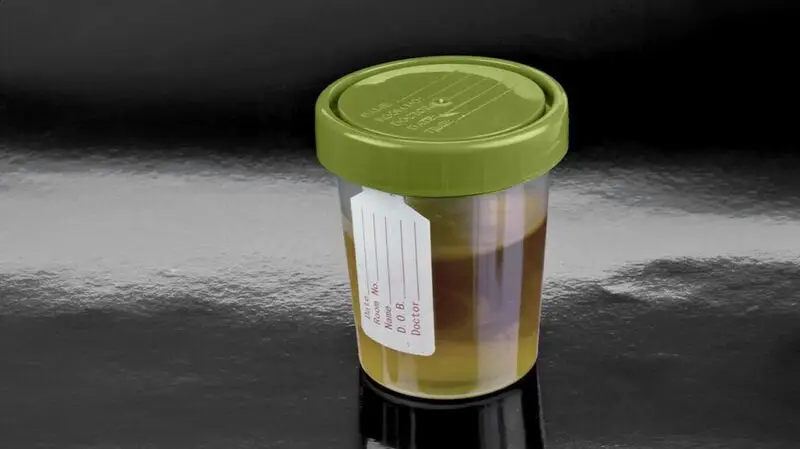
- Researchers at Virginia Commonwealth University are working on developing a urine-based test to detect ovarian cancer at an earlier stage.
- The research team investigated the possible use of nanotechnology in analyzing certain peptides that are found in the urine of people with ovarian cancer.
- Although this discovery is promising, the diagnostic process technique is still in its early stages.
Scientists are working on a potential urine-based test to help detect ovarian cancer in its early stages.
The researchers from Virginia Commonwealth University published their study in the Journal of the American Chemical Society. They will also present their findings at the Biophysical Society Annual Meeting next week in Philadelphia.
The researchers’ goal is for medical professionals to use this information, combined with CA-125 blood tests, transvaginal ultrasound, and family history, to provide early-stage detection, diagnosis, and treatment for ovarian cancer.
“There are no screening tests that are useful or available for ovarian cancer,” said Dr. Deanna Gerber, a gynecological oncologist at NYU Langone’s Perlmutter Cancer Center and an assistant professor of gynecology at NYU Langone Grossman School of Medicine-Long Island in New York who was not involved in the research.
“As such, the majority of ovarian cancers are diagnosed at stage three and four when they become symptomatic,” Gerber told Medical News Today. “This technology is exciting because anything that may increase our chances of detecting cancer at an earlier stage will undoubtedly improve our chance of curing more ovarian cancers.”
There are thousands of tiny particles, called peptides, in our urine and there are specific ones that signal ovarian cancer.
Currently, the techniques commonly used are not always straightforward or cost-effective to detect the molecules connected to ovarian cancer.
The researchers worked on a new approach they say could more efficiently and accurately detect these peptides by using nanopore sensing, which has the potential to detect multiple peptides.
Nanopore sensing involves passing molecules through a tiny pore (nanopore) and measuring the changes in electrical current or other properties as the molecules move through.
The researchers identified and analyzed 13 peptides, including those derived from leucine-rich a-2 glycoprotein (
According to the researchers, they now know what the signatures of the peptides look like and how they can be used to detect ovarian cancer at earlier stages than current tests can.
“The science behind this is fascinating and seems very promising as a way to potentially detect ovarian cancer via urine,” Gerber said. “I think this presents some hope for our patients and cancer care providers that the scientific community is continually looking to improve outcomes for gynecologic cancers. The ultimate goal will always be to prevent cancer before it starts, but if we cannot do that, catching it early will translate directly to improved outcomes and improved survival.”
While the research has the potential to save lives, experts say there are still questions.
“Although the research is promising, it is far from prime time as a screening or diagnostic test for ovarian cancer,” said Dr. Diana Pearre, a gynecologic oncologist at The Roy and Patricia Disney Family Cancer Center at Providence Saint Joseph Medical Center in California who was not involved in the study.
“I am optimistic about this technology eventually being able to aid us in helping detect ovarian cancer. Currently, the tests we use in our workup for ovarian cancer are pelvic ultrasounds and tumor markers (a blood test),” Pearre told Medical News Today. “There is currently no urine test to help in the workup for it.”
“This is still a far away from reaching patients in clinic on a wide scale and will likely require a proof-of-concept trial to determine its sensitivity in detecting a rare disease,” she added. “However, it still provides a promising new avenue to aid in our workup of ovarian cancer if and when it becomes available to patients.”
“To my knowledge, nanopore technology is not being used for the detection or treatment of illness, but it is available in a very portable format for handheld genome sequencing,” Pearre said.
Nanotechnology is not a product, but rather it is a process that uses the changes in the properties of a substance when examined at nanometer size, according to the International Institute for Nanotechnology.
It is a field not just about working with microscopic objects but about capitalizing on the unique and changing properties of nanoscale materials to create solutions to problems.
“Nanotechnology is the new frontier not only for diagnostic purposes but for therapeutic utilization as well,” said Dr. Kecia Gaither, an OB/GYN and expert in maternal fetal medicine as well as the director of Perinatal Services/Maternal Fetal Medicine at NYC Health + Hospitals/Lincoln in the Bronx. “[It] has been utilized in the diagnosis of other types of cancers, infectious entities, and dermatological issues as examples.”
“[I am] quite optimistic about its utilization in the diagnosis of ovarian cancer by what is a noninvasive simple procedure as opposed to the operative invasive methodologies commonly used now in the diagnostic cascade for ovarian cancer,” Gaither, who was not involved in the research, told Medical News Today. “I foresee there is likely to be an explosion of the use of nanotechnology for the diagnosis and treatment of other illnesses in the near future.”





